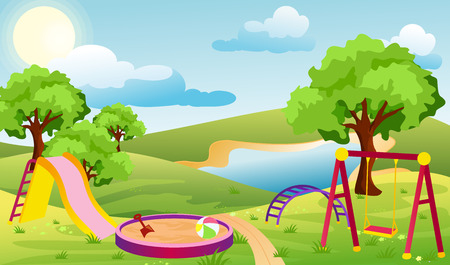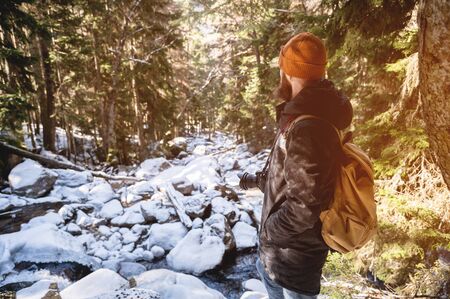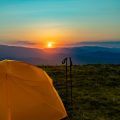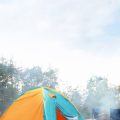1. Planning the Ultimate Road Trip
When it comes to combining travel and outdoor family fun, nothing beats a well-planned road trip with camping stops along the way. Whether youre heading to national parks, scenic coastal routes, or mountain getaways, planning is key to making the most of your adventure.
Choose Your Route Wisely
Start by picking a route that matches your familys interests and time frame. Popular road trip routes in the U.S. include:
- Pacific Coast Highway (California): Perfect for beach lovers and ocean views.
- Route 66: A classic American drive full of quirky roadside attractions.
- Blue Ridge Parkway (Virginia to North Carolina): Great for mountain scenery and fall foliage.
- Great River Road (Mississippi River): Ideal for history buffs and small-town charm.
Map Out Your Stops
Break up long drives by planning interesting stops every few hours. Look for national parks, local diners, hiking trails, or small towns worth exploring. Use apps like Google Maps or Roadtrippers to visualize your route and find must-see attractions and campground options nearby.
Sample Road Trip Itinerary
| Day | Destination | Main Activity | Overnight Stay |
|---|---|---|---|
| 1 | Los Angeles, CA | Packing and Departure | Campsite near Santa Barbara |
| 2 | Big Sur, CA | Coastal Hiking & Beach Time | Campsite in Big Sur State Park |
| 3 | San Francisco, CA | Sightseeing & Local Food Tour | Motel or RV Park near city |
Create a Budget That Works for You
A successful road trip means staying within budget while enjoying everything along the way. Factor in gas prices, food costs, park entrance fees, and campground reservations. Heres a simple breakdown to help you plan:
Basic Road Trip Budget Estimate (per day)
| Category | Estimated Cost (USD) |
|---|---|
| Gas | $40 – $70 |
| Food (Groceries & Dining) | $50 – $100 |
| Campsite Fees / Lodging | $20 – $80 |
| Activities & Entrance Fees | $10 – $30 |
With a little preparation—choosing the right route, mapping out fun stops, and budgeting for essentials—youll be on your way to an unforgettable road trip filled with family bonding, outdoor adventures, and plenty of campfire stories.
2. Choosing the Right Campsites
Finding the perfect campsite can make or break your family road trip and camping adventure. Whether youre planning to pitch a tent in the woods or park your RV near a scenic lake, choosing the right spot is key to keeping everyone happy and comfortable.
Tips for Finding Family-Friendly Campgrounds
When traveling with kids, its important to find campgrounds that offer more than just a place to sleep. Look for spots that have amenities and activities designed for families.
- Playgrounds: Great for keeping younger children entertained.
- Swimming Areas: Lakes, pools, or splash pads are perfect for hot days.
- Kid-friendly Trails: Short, easy hikes are ideal for little legs.
- Ranger Programs: Many national parks offer educational programs just for kids.
Understanding Campsite Amenities
Campsite amenities vary widely depending on location. Some sites are rustic with no electricity or running water, while others feel more like outdoor resorts. Here’s a quick breakdown of common amenities to look for:
| Amenity | Description | Good For Families? |
|---|---|---|
| Electric Hookups | Powers RVs or small appliances | Yes – great for comfort & convenience |
| Restrooms/Showers | Flush toilets and hot showers | Yes – essential for young kids |
| Picnic Tables & Fire Rings | Makes meals easier and more fun | Yes – perfect for outdoor dining and s’mores |
| Laundry Facilities | Wash clothes during extended trips | Nice to have – especially on long road trips |
| Wi-Fi Access | Laptop or phone connection at campgrounds | No – unless you need to stay connected or work remotely |
Reserving Spots at Popular National Parks and Scenic Locations
If youre planning to visit popular destinations like Yosemite, Yellowstone, or the Grand Canyon, booking early is a must. Campsites in these areas often fill up months in advance—especially during summer vacation season.
Reservation Tips:
- Use Recreation.gov: This is the main site for booking campsites at U.S. national parks.
- Create an Account Early: Set up your profile before reservations open so you can book quickly.
- Add Dates to Your Calendar: Know when bookings open (usually 6 months in advance).
- Select Backup Options: If your first choice fills up fast, having alternatives helps.
- Aim for Weekdays: Campsites are less crowded and easier to reserve mid-week.
If You Miss Out on Reservations:
You might still get lucky with first-come, first-served spots. Arrive early in the morning, especially on weekdays. Or consider private campgrounds nearby—they may offer similar views with more availability.
The right campground sets the tone for your road trip adventure. With a bit of planning and some research, you can find places that keep everyone—from toddlers to grandparents—happy under the stars.

3. Essential Gear for Road Trips and Camping
Having the right gear can make or break your road trip and camping adventure. Whether youre heading to a national park, beachside campground, or forest retreat, packing smart ensures everyone has a good time. Heres a checklist of must-have items to keep your trip smooth, safe, and full of fun.
Tents and Sleeping Essentials
A reliable tent is your home away from home. Make sure it’s weather-appropriate and easy to set up. Don’t forget sleeping bags that match the season, along with comfortable sleeping pads or air mattresses.
| Item | Why You Need It |
|---|---|
| Tent (with rainfly) | Shelter from wind, rain, and bugs |
| Sleeping bags | Warmth and comfort at night |
| Sleeping pads or air mattresses | Cushioning for better sleep |
| Pillows or travel pillows | Adds comfort for long nights or car naps |
Cooking Supplies
Eating well on the road doesnt have to be hard. With some basic cooking gear, you can whip up family favorites by the campfire or picnic table.
| Item | Purpose |
|---|---|
| Portable stove or grill | Cook meals anywhere, anytime |
| Propane or fuel | Powers your stove or grill |
| Pots, pans, and utensils | For preparing and eating meals |
| Cooler with ice packs | Keeps food and drinks fresh |
| Reusable plates and cups | Eco-friendly dining solution |
Entertainment on the Go
Long drives and downtime at the campsite are perfect times for family bonding. Bring along portable entertainment that everyone can enjoy.
Ideas for Portable Fun:
- Card games or board games: Great for evenings around the picnic table.
- A Bluetooth speaker: For music around the campfire.
- Books or e-readers: Perfect for quiet time in the tent.
- Outdoor games like frisbee or cornhole: Keep kids active and engaged.
- A tablet with downloaded movies: Handy for rainy days or long drives.
Safety Equipment & First Aid
Your safety kit should always be within reach. Whether youre hiking trails or parked overnight in a remote area, being prepared can make all the difference.
| Item | Use Case |
|---|---|
| First aid kit | Treat minor cuts, burns, or insect bites quickly |
| Flashlights or headlamps (with extra batteries) | Navigating in the dark at campsites or rest stops |
| Multi-tool or pocket knife | Useful for repairs, food prep, or emergencies |
| Maps and GPS device (or charged phone) | Avoid getting lost in unfamiliar areas |
| Sunscreen and bug spray | Protection from sunburns and insect bites |
Packing Tips for Easy Travel Days
The key to a stress-free road trip is keeping things organized. Use bins or storage containers to separate gear by category—like cooking items in one bin, sleeping gear in another. Label everything so its easy to grab what you need without digging through piles of stuff. Also, pack essentials like snacks, water bottles, wet wipes, and chargers within arms reach inside the vehicle.
Pro Tip:
Create a shared family checklist before leaving—this helps avoid last-minute scrambles for forgotten items like chargers, flashlights, or favorite snacks.
A little planning goes a long way toward making your road trip and camping experience enjoyable for everyone!
4. Fun Activities for the Whole Family
One of the best parts about road trips and camping is the chance to enjoy quality time together as a family. Whether youre exploring a national park, setting up camp by a lake, or parking your RV in the woods, there are plenty of outdoor activities that can bring everyone closer while having fun in nature.
Outdoor Games That Keep Everyone Moving
Games are a great way to get kids and adults moving after a long drive. Pack some simple sports gear or plan games that require little to no equipment. Here are a few favorites:
| Game | What You Need | Why Its Great |
|---|---|---|
| Cornhole | Cornhole boards and bean bags | Easy to set up and fun for all ages |
| Frisbee | A single frisbee | Great for open spaces and encourages running around |
| Scavenger Hunt | Printed list of items to find in nature | Sparks curiosity and teaches kids about local wildlife and plants |
| Capture the Flag | Two flags, open space | Perfect for big families or group camping trips |
Family-Friendly Hiking Trails
Hiking is one of the top ways to explore your surroundings and connect with nature. Choose trails that match your family’s energy levels and experience. Look for trails marked “easy” or “family-friendly” on apps like AllTrails or through local ranger stations.
Tips for an Enjoyable Hike:
- Bring plenty of water and snacks.
- Pace yourself—kids may want to stop and explore often.
- Use a child carrier backpack if hiking with toddlers.
- Teach kids how to stay on trail markers and spot safe paths.
Campfire Storytelling Nights
No camping trip is complete without a cozy night around the campfire. After dinner, gather the family for storytelling under the stars. Let each person take turns sharing a story—real or made-up. You can also read from a favorite book or use flashlights for dramatic effects.
Story Ideas:
- Funny memories from past road trips
- Mild ghost stories (age-appropriate)
- Create-your-own adventure tales where each person adds to the story
- Tales inspired by animals you’ve seen during your trip
Other Engaging Activities in Nature
If youre staying at a campground, check out if they offer organized activities like nature walks, junior ranger programs, or arts and crafts sessions. These are especially popular in U.S. national parks and larger RV resorts.
You can also try these simple but meaningful ideas:
- Nature Journaling: Give each family member a notebook to draw or write about what they see each day.
- Stargazing: Lie back on blankets and try identifying constellations using apps like SkyView or Star Walk.
- Pond Dipping: With supervision, let kids explore shallow streams or ponds with nets to observe small creatures (then release them safely).
- Photography Challenges: Have a photo contest where everyone captures their favorite moment or scenery of the day.
The key is to keep things lighthearted and flexible. Road trips and camping are all about creating lasting memories together—and these fun activities help make every mile more meaningful.
5. Staying Safe and Eco-Friendly on the Road
When youre hitting the road for a family camping adventure, safety and sustainability go hand in hand. Whether youre driving through scenic highways or setting up camp in national parks, keeping everyone safe and protecting nature should always be part of your plan.
Safe Driving Tips for Road Trips
Long drives can be exciting, but they also come with risks. Here are some best practices to keep your road trip safe:
- Plan Your Route: Use GPS apps like Google Maps or Waze, and check for road closures or weather alerts before heading out.
- Take Breaks: Stop every 2-3 hours to stretch, rest, and grab snacks. Fatigue is a major cause of accidents.
- Keep an Emergency Kit: Include jumper cables, flashlight, basic tools, water, snacks, and blankets.
- Buckle Up: Make sure everyone wears seatbelts at all times.
- Follow Speed Limits: Especially important on winding mountain roads or in wildlife zones.
Be Prepared for Wildlife Encounters
Wildlife sightings can be thrilling, but safety comes first. Heres how to handle encounters with local animals:
- Keep Your Distance: Never approach wild animals, even if they seem harmless or friendly.
- Store Food Properly: Use bear-proof containers and never leave food out at your campsite.
- Know Local Species: Research animals common in the area and how to respond if you see them.
- No Feeding: Feeding wildlife is dangerous for both you and the animals—it can make them aggressive or reliant on humans.
First Aid Essentials for Outdoor Adventures
Packing a first aid kit is a must for any road trip or camping outing. Here’s a quick checklist of essentials:
| Item | Purpose |
|---|---|
| Bandages & Gauze | Treat cuts, blisters, and minor wounds |
| Antiseptic Wipes & Cream | Cleans wounds to prevent infection |
| Tweezers & Scissors | Remove splinters or cut tape/bandages |
| Pain Relievers (like Tylenol) | Relieve headaches, pain, or fever |
| Aloe Vera Gel | Soothe sunburns or minor burns |
| Allergy Medication (like Benadryl) | Treat allergic reactions or bug bites |
| Moleskin Pads | Prevent and treat blisters from hiking boots |
Minimizing Your Environmental Footprint
Caring for nature ensures it stays beautiful for generations to come. Try these simple eco-friendly habits while on the road and at camp:
Leave No Trace Principles
- Pack It In, Pack It Out: Bring reusable containers and take all trash with you.
- Stay on Trails: Prevent erosion by sticking to marked paths when hiking or biking.
- Avoid Single-Use Items: Use refillable water bottles and washable plates/utensils.
- Use Eco-Friendly Soaps: If washing dishes outdoors, use biodegradable soap away from natural water sources.
Sustainable Travel Habits
| Sustainable Choice | Why It Matters |
|---|---|
| Carpooling with Family/Friends | Lowers fuel use and reduces carbon emissions |
| Avoid Idling the Car Engine | Saves gas and cuts down on pollution |
| Campsites with Recycling Bins | Makes it easier to dispose of waste responsibly |
| Solar-Powered Gear (lights, chargers) | Cuts down on battery waste and uses renewable energy |
A little planning goes a long way in making your road trip both safe and environmentally friendly. By following these tips, you can focus more on enjoying quality time with your family under the open sky—and less on worrying about what could go wrong.


